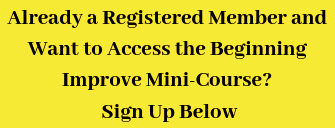This lesson on playing saxophone high notes and their related problems is for those players who at least know the fingering and are already playing those notes. If you are not familiar with the finger positions for those last few high notes of the saxophone’s range called the “palm key notes” then you can learn them here. You’ll see the complete saxophone high notes finger chart there.
The middle range on the sax is relatively easy to play compared to the bottom few notes and the upper register. While the very low end can be fixed by simply applying much more air support, getting the highest notes to play strong and in tune can be a bit more complicated than that.
Sometimes, and depending on what stage of development you’re in, it’s not just about changing reeds or getting a better mouthpiece. Ok, there’s the bad news, the goods news is that you have the necessary tools to improve your flat and thin high notes already with you.
Producing a nice sound in that upper range can be a little difficult to say the least for a new student. At the beginning we don’t have good control over our embouchure. When reaching for those higher notes it’s natural to slip back on the mouthpiece, meaning less of it is in your mouth. We tend to bite hard as well and less air is being pushed through from the diaphragm, where it should be blasting out from.
Also, a common newbie question is; Are the notes the same for tenor and alto? Yes. The entire saxophone family shares the exact same fingering positions. So if you’ve learned the alto saxophone high notes, everything is the same if you change over to the tenor, or any other type of sax.
Want to conquer the Saxophone Altissimo Range?
Now there is a 14 video complete course which takes you step-by-step on just how to do that!
Learn more




Hi Johnny ! Thanks for this explaination. It comes in the right time for me. Sometimes hitting the high e or f (sharp) it doesn’t come. Tried with several reeds and MP’s, well, one works better than the other, but finally it seems it’s up to myself to improve the high tones.
Cheers, Klaus
Johnny, what I like best about your instruction is you go right to the crux of the matter unlike many of my former instructors. You present material that is useful right now. not 2 years from now.
Wow. Such perfect timing! Thanks so much! Will def incorporate these exercises into my practices!
This video is VERY timely for me Johnny–my high F# is coming out much better since our private lesson and it’s amazing the difference of using my bottom lip and going from F# to high F# like you showed me v.s. practicing it chromatically from a high C# and had made. In practicing it like you showed me, the closer it is to the tip of the mouthpiece then the thinner it becomes; but the more of the reed I push with my bottom lip then the fuller the high F# becomes. Is this how Altissimo starts?
That’s exactly problem I had when going thru your book since I’m a piano player who has no idea how sound’s produced on sax. I thought something wrong with sax, so I brought it to SamAsh to fix, nothing found, the technician played high notes w/o any issues, she suggested me going to 2.5 reeds but it did not help at all until you confirmed that throat and mouth needs to be adjusted. Thanks a lot!
Hi Jonny,
great that you starting that course.
i´m agog about this.
cheers
Richard
Johnny: Thanks for doing this! We worked on it in the last lesson. What is interesting is that I can go higher than F on my M-6, but I don’t know what the note is? Gotta figure that on our next lesson? Thanks again. Tim
Yes. Tim your timing is right on with my upcoming altissimo course cause I just sent an email which I said something about how many struggling students will often hit an altissimo note but won’t even know which note it is. This is common and will continue until the altissimo technique is studied and learned. I hope you are on the special altissimo email list because you will get a lot out of…once I get it done of course!
I’ve been making it a point nowadays to use a tuner along with this exercise, especially when hitting that high F# that we worked on in our lesson; really helps. They’re cheap and a great learning tool.
Practice with a tuner, definetley! Everyone here can see how our member Kevin did this after his first video upload. In about a month’s time, by practicing long tones and octaves with a tuner the progress that was made is very noticeable. One month to accomplish something as noticeable as to improve your intonation is great. Keep using it Michael and it’ will reward you!
Johnny,
It’s Patrick here, I purchased the sheet music for YAKATY SAX a day or two ago but regret nothing came through in my email. Hoping you can fix it for me.
By the way I’m looking forward to your Altissimo Lesson.
Patrick
Ok Patrick, I’ll email you download link right away.
Johnny
Excellent thoughts and input, thank you vinny
Thanks for tip on higher notes,I can get A-B OK its C-F I need to work on. Stayed away from music with these notes. Hand work is so hard to do with palm keys,Great help between you and Jay Metcalf Tom.